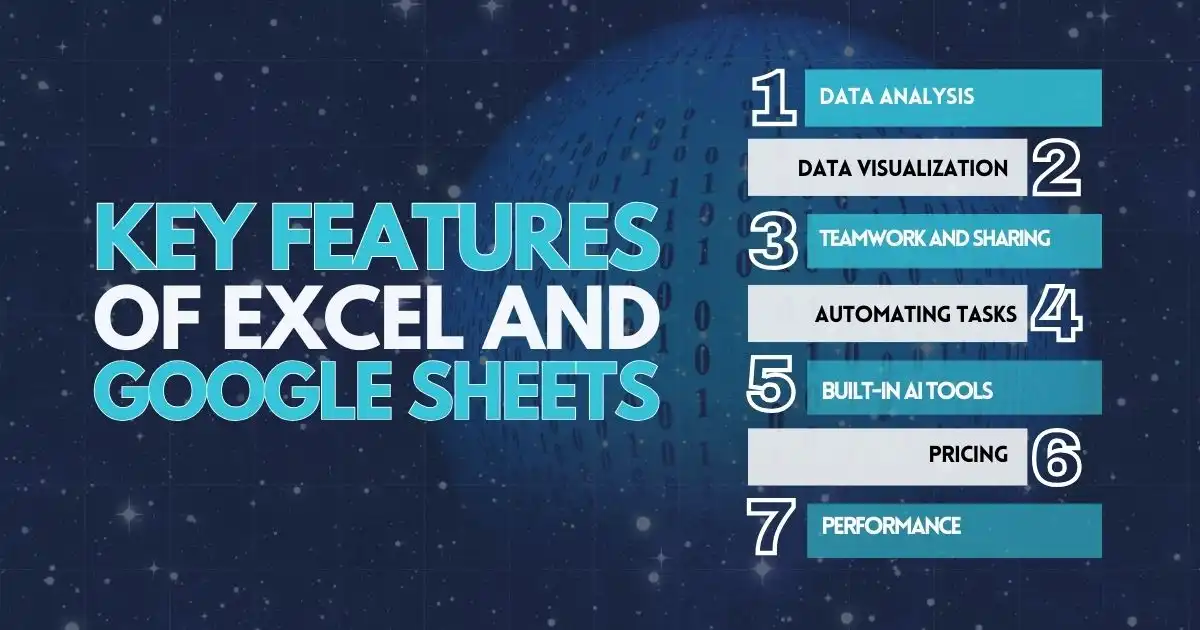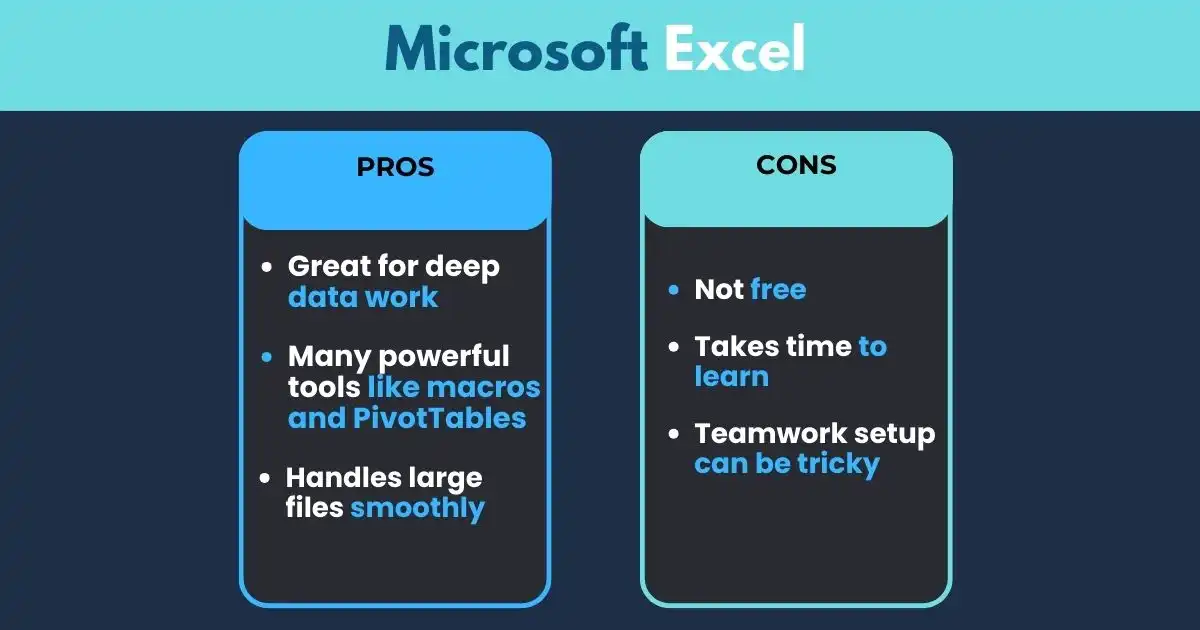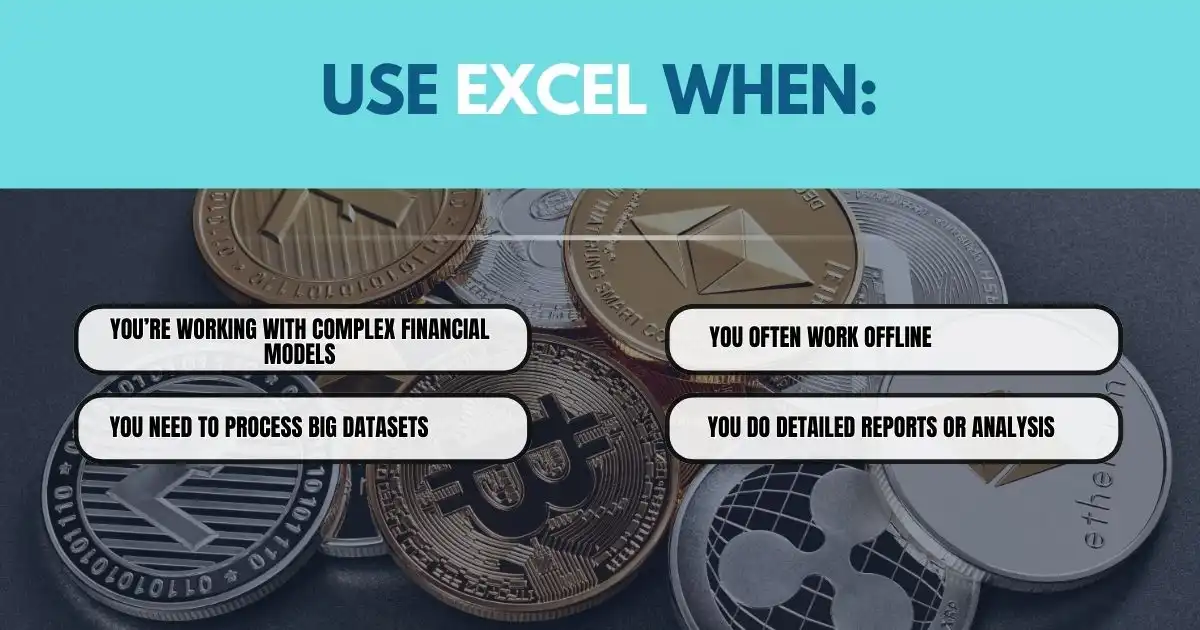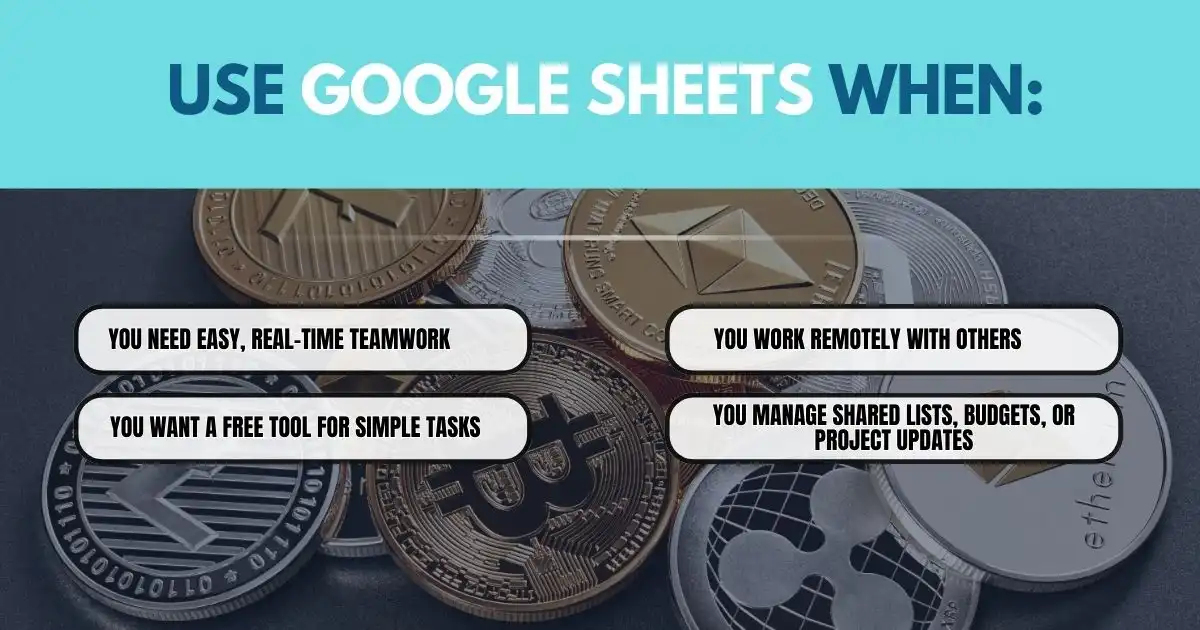Spreadsheets are a go-to tool for many, and two of the most popular options are Google Sheets and Microsoft Excel. Both offer powerful features, but they cater to different needs. Google Sheets excels at real-time online collaboration, while Excel is designed for complex data analysis and advanced calculations.
So, how do they compare in everyday use, and which one is better suited for your needs?
Overview of Excel and Google Sheets
Microsoft Excel and Google Sheets are both helpful spreadsheet tools, but they work differently and suit different tasks. Each one brings its strengths. Let’s take a closer look at what makes them different.
What is Excel?
Microsoft Excel has been around since 1985. It’s part of the Microsoft 365 package and works well with other Microsoft tools like Word and PowerPoint.
Excel is built to work best on your computer. It’s widely used by finance professionals, analysts, and business managers who work with large amounts of data and need strong calculation tools.
What is Google Sheets?
Google Sheets launched in 2006 and runs on the web. It’s part of Google Workspace and lets people work together on the same file at the same time.
It’s easy to use, works across devices, and is great for teams who want to share and edit data quickly. While it has fewer advanced features than Excel, it handles most everyday tasks just fine.
Key Features of Excel and Google Sheets

Let’s compare both tools based on important features and see which one works better for each.
Data Analysis
Excel has more powerful tools for deep data work, like PivotTables and What-If Analysis. It also supports complex statistical tasks. Google Sheets has useful formulas, but doesn’t go as far.
Winner: Excel
Data Visualization
Excel offers more charts and graphs. It even suggests the right one based on your data. Google Sheets has fewer options and no chart suggestion feature.
Winner: Excel
Teamwork and Sharing
Google Sheets is great for teams. It lets multiple people edit together in real time and shows updates instantly. Excel needs extra steps, like saving to OneDrive, to allow collaboration.
Winner: Google Sheets
Automating Tasks
Excel uses VBA, which lets you record and run macros. Google Sheets uses Apps Script, which is easier for those who know JavaScript.
Winner: Tie
Built-in AI Tools
Excel has Copilot AI, which helps you see trends and get insights from data. Google Sheets uses Duet AI for simple help, like organizing tasks. Excel handles more complex work.
Winner: Excel
Pricing
Google Sheets is free for personal use. Businesses pay for Google Workspace. Excel isn’t free, but it has cheaper plans starting at $1.99/month.
Winner: Excel
Performance
Excel works faster with large files and heavy calculations. Google Sheets can slow down with too much data.
Winner: Excel
Pros and Cons
When it comes to managing financial data, most teams rely on either Google Sheets or Microsoft Excel. Both tools are powerful, but they serve different needs depending on your workflow, team size, and data complexity. To help you decide which is right for your use case, here’s a look at the pros and cons of each platform.
Google Sheets

Pros:
- Free for personal use
- Great for team projects
- Easy to use for beginners
Cons:
- Limited tools for advanced work
- Fewer chart options
- Can slow down with large files
Microsoft Excel

Pros:
- Great for deep data work
- Many powerful tools like macros and PivotTables
- Handles large files smoothly
Cons:
- Not free
- Takes time to learn
- Teamwork setup can be tricky
When to Use Each Tool
While Google Sheets and Excel offer similar functionality, each tool shines in different situations. Understanding when to use one over the other can help you work more efficiently and choose the best option for your specific needs.
Use Excel When:

- You’re working with complex financial models
- You need to process big datasets
- You often work offline
- You do detailed reports or analysis
Use Google Sheets When:

- You need easy, real-time teamwork
- You want a free tool for simple tasks
- You work remotely with others
- You manage shared lists, budgets, or project updates
Pick the Tool That Works for You
Choosing between Google Sheets and Excel isn’t about which one is better—it’s about what fits your needs right now. Each tool gives you something valuable. Excel handles heavy tasks with power and precision. Google Sheets supports easy teamwork and quick access from anywhere.
If you’re handling large data, building complex models, or working offline, Excel gives you what you need. If you’re working with others, updating files on the go, or starting something simple, Google Sheets gets the job done without extra steps.
The real question is: What do you need your spreadsheet to do today? Pick the one that helps you move forward with less friction and more focus. Then put it to work.
FAQs
What is the difference between Google Sheets and Excel?
The main difference between Google Sheets and Excel is collaboration and functionality. Google Sheets is cloud-based and ideal for real-time teamwork, while Excel offers more advanced features for data analysis, modeling, and large datasets.
Is Google Sheets the same as Excel?
No, Google Sheets and Excel are similar in purpose but not exactly the same. They both handle spreadsheets, but Excel has deeper functionality, whereas Sheets is better for live collaboration and accessibility across devices.
Google Sheets vs Excel: Which one should I use?
Use Google Sheets if you need easy sharing, real-time collaboration, and access from anywhere. Choose Excel if you’re working with large datasets, advanced formulas, or need complex financial modeling tools.
Are Google Sheets and Excel the same tool with different names?
They serve similar functions but are different tools. While both allow data organization and calculations, Google Sheets is web-based and more lightweight, while Excel is a more robust, feature-rich desktop application.
